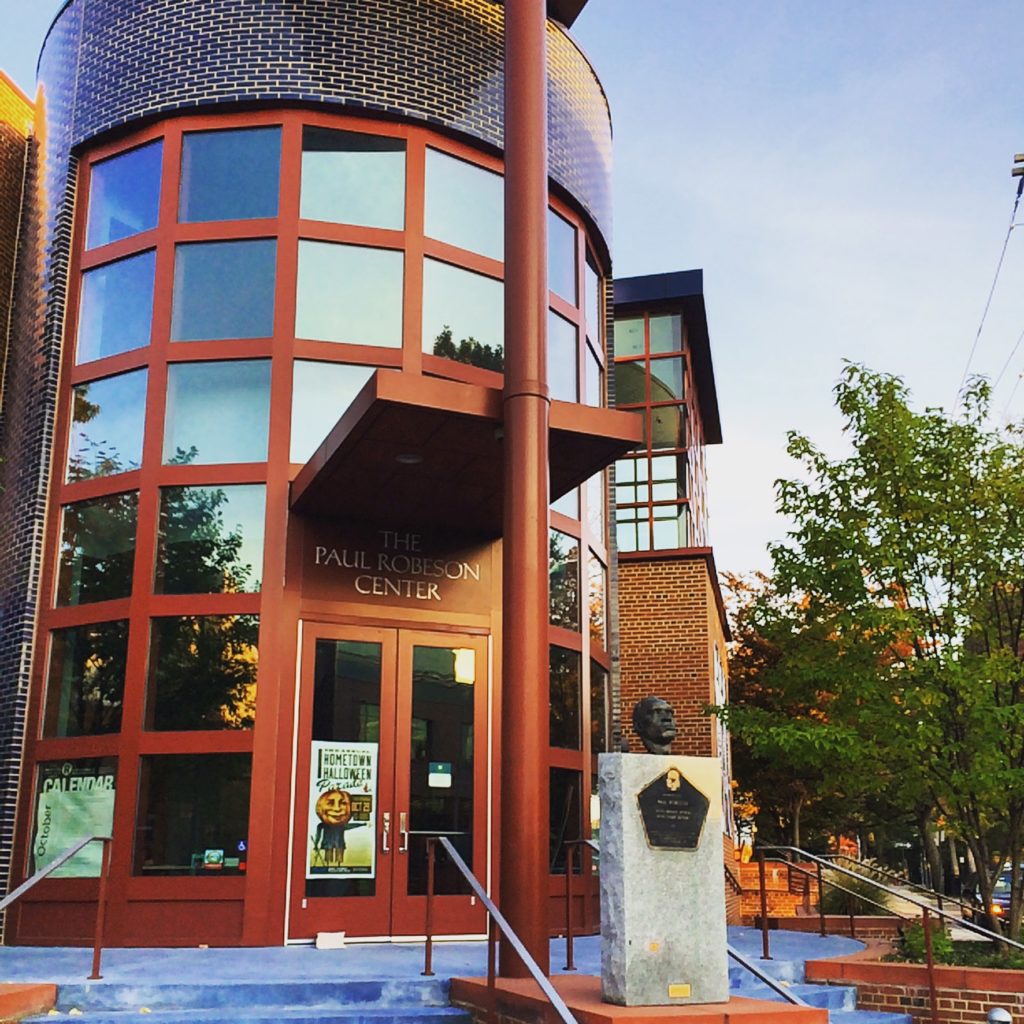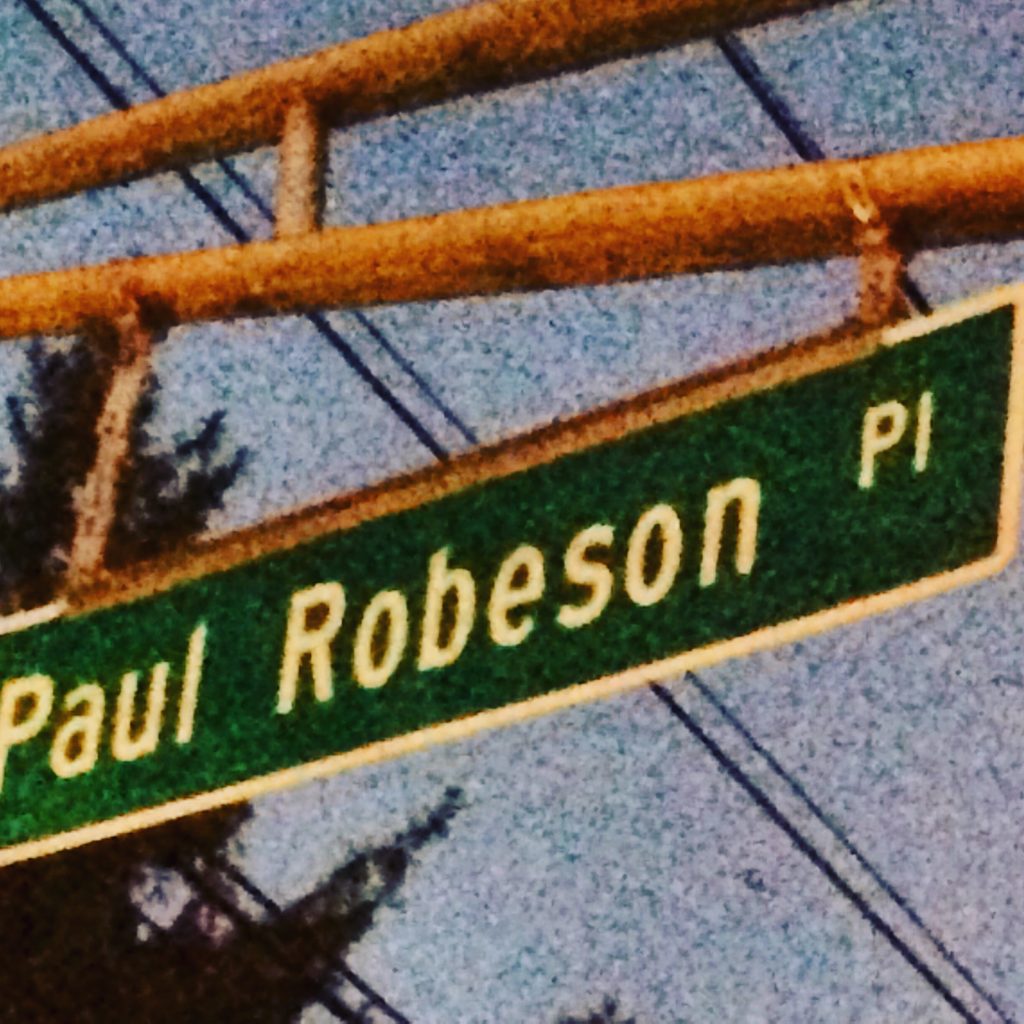
Paul Robeson Center for the Arts, home of Arts Council of Princeton, designed by Michael Graves
In the New Jersey chapter of his legendary life, Paul Robeson, the son of a former slave, was born in Princeton. His father, William Drew Robeson I, also an accomplished man, was the minister of Witherspoon Street Presbyterian Church for 21 years. Through the Underground Railroad, William had escaped from slavery at the age of 15, later serving in the Union Army as a laborer and graduating from Lincoln University with a Sacred Theology degree. Paul’s mother, Maria Louisa Bustill, was of African-American, Native American, and Anglo-American descent and brought up in a well-known Quaker family of abolitionists. One of her ancestors founded the Free African Society in Philadelphia in 1787. Though Lincoln University accepted only men at the time, Maria and her sister received permission to attend classes, and Maria later taught and tutored in the Princeton community.
Tragically, when Paul was six, his mother died in an accident at home and shortly after the remaining Robesons, Paul, his father, and four siblings, moved to Westfield, also in Central New Jersey. Unfortunately, differences of opinion about the direction of the Witherspoon Street Presbyterian Church, founded by what was the First Presbyterian Church, had also led to Minister Robeson’s move to another congregation, initially in Westfield and then in nearby Somerville, where the family settled. Paul attended Somerville High School and then Rutgers University, 1915-1919, the only African-American at the time, the third in its history. At Rutgers, he played four varsity sports, earned 15 varsity letters, won speech and debate competitions, and was a glee club soloist. Despite resistance from some football players, he was twice All-American, a member of the Phi Beta Kappa Society, the Cap and Skull Honor Society, and class valedictorian. He went on to receive a law degree from Columbia University while playing for the NFL.
Paul Robeson excelled at everything he did, which for an African-American man at the time was not always the blessing one might have hoped. Opportunity for him to practice law in New York City proved limited, so he developed his artistic talent as a singer and an actor, becoming a star of the stage and screen as well as a renowned concert artist. Paul possessed a remarkable bass voice, which he described as a baritone. Of his versatile creative roles, concert performer allowed him the most artistic control. Over a remarkable life, the world citizen who was fluent in many languages lived in England and did travel the world. His compassion made him a lifelong advocate not only for civil rights but human rights through avenues of change that were available to him at the time. Paul Robeson was possibly the person whose view of the artist – through the roles they chose and the publicity they garnered – who created a template for our time of artists as people who bring attention to those who are suffering.
Today, the Arts Council of Princeton preserves Paul Robeson’s legacy as an artist in the Paul Robeson Center near his childhood home in addition to schools in his name throughout the state and the Newark Rutgers Campus Center. For the Arts Council’s extensive classes, programs, exhibits, and events, visit: Arts Council of Princeton or @ArtsCouncilofPrinceton on Facebook and Instagram with Twitter updates @ArtsPrinceton Twitter.
The Robeson family home, once owned by the church, is now undergoing a renovation by the nonprofit The Paul Robeson House of Princeton. Pictured also is the Paul Robeson Center, designed by Princeton architect Michael Graves. Prominent sculptor Jacob Epstein created the bust of Paul Robeson that welcomes visitors.
(Sources: “The Moral Quandary of Heels” Copyright © 2013 All Rights Reserved Kathleen Helen Levey All Rights with additional notes from Lincoln.edu, Wiki)


Comments are closed.